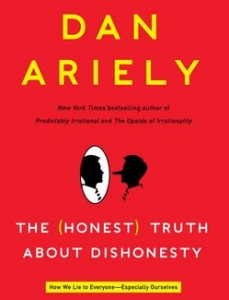Content Marketing
How Market Research Is Flawed – and Content Can Replace It
Ninety years ago Henry Ford famously said: “If I asked people what they wanted, they would have said a faster horse.”
These words from one of the greatest innovators in American history reflect the simple fact that people are essentially incapable of telling you what they really want.
We base our decisions on past experience, familiarity, social concerns and other factors that combine to make us horribly irrational, and unable to think creatively.
Unfortunately, most research done by ad agency planners fails to address these limitations, and the results can provide the wrong information about a campaign or creative execution. Why do we conduct market research on juice commercials while sitting around a conference table in a halogen-lit room with two-way mirrors? Commercials are viewed at home, usually while you’re in the kitchen getting a snack, impatiently waiting for your programming to return. Plus, they’re played back-to-back with five other spots.
The same questions can be asked of car research that doesn’t occur while driving down the highway, or shampoo research that takes place miles from one’s shower. The problem with most research is that we often ask people to tell us things they simply can’t—our feeble human brains are actually unable to process things like, well, our future feelings.
Our biggest challenge as content marketers is to think about the environment in which people share information.
Or, as Dan Ariely’s description of irrational decision-making in The Honest Truth About Dishonesty: How We Lie to Everyone – Especially Ourselves, explains: “We’re storytelling creatures by nature, and we tell ourselves story after story until we come up with an explanation that we like and that sounds reasonable enough to believe.”
For content marketers this is a particularly important lesson.

Content marketing allows for the organic spread of information, shedding “interruption-based” advertising and encouraging sharing in existing peer/professional groups. So our biggest challenge as content marketers is to think about the environment in which people share information, not whether they think the shade of purple you’ve used makes them feel melancholy. In other words: context.
Now, we’re not advocating stepping into the shower with your research subjects to ask them questions about their shampoo, so let’s get specific here.
Imagine you’re charged with using content marketing to encourage people to take better care of their teeth. Most people, when asked point-blank about their brushing habits, will lie about how frequently they brush. Our moms and dentists have conditioned us to think that the correct answer is two, but nobody’s perfect, and on average it’s probably more like 1.5.
The goal is … to engage in a conversation that builds context.
A research subject might reason with himself and decide that several times a week he forgets to brush, but that most of the time he brushes twice a day, and so the answer is two. If people can’t even give a straight answer about the discrete number of times they load up their brush with paste, imagine trying to ask them what would make them share information about good oral care. Oof. That’d go nowhere fast.
To get around our built-in irrationality, and the inaccuracy of our research subjects, it’d be more useful to understand the drivers that influence people to care about their teeth—vanity, peer pressure, gingivitis, preventative care. Once you know the emotional impetus, then you can get tactical. When do people brush? What makes them skip brushing? Do they look at their smart phones while brushing? What kinds of personal rewards do they set up for themselves when they follow a tooth brushing routine?
The goal is not to ask one-off questions, but to engage in a conversation that builds context, and from which you can make inferences about behavior. Once you’ve painted a complete picture of brushing behavior, motivations, strategies, and social implications, you can design content campaigns around this information.
Maybe it’s an iPhone app that uses gamification to make brushing fun, or a knowledge sharing effort that exposes facts about the preventative power of flossing. Whatever the execution is, if you’ve done research that provides context the result is much more likely to reflect how people actually think and behave, instead of how they act in a vacuum. With that in mind, research should be used to inform strategy rather than to falsely judge solutions. What this means for market research:
- Research is best used to understand problems from a human perspective, shedding light on what stimuli they react to. It provides context, not answers.
- Research is elemental to the upfront development process – as an input into strategy rather than a ‘judge’ of what ‘works.’
- Research methodology should be creative. The best learning comes from ‘real’ situations in home ethnographies, friendship groups – rather than false environments of strangers meeting for the first time in front of a two-way mirror.
- It is not the role of research to art direct or write executions. This results in communications that are acceptable to all and meaningful to none. If every respondent ‘likes’ an idea they have probably seen it before.
So the next time you’re tasked with a research problem, think about what life would be like if we were all on horseback right now.
Images courtesy of Emily Baron/flickr, David Fant/flickr
Image by ShutterstockGet better at your job right now.
Read our monthly newsletter to master content marketing. It’s made for marketers, creators, and everyone in between.




